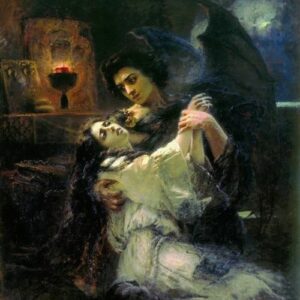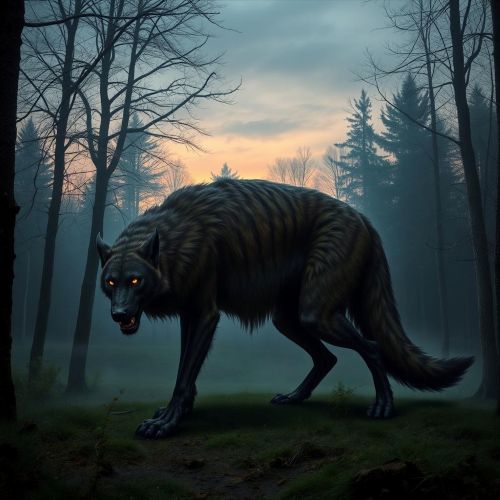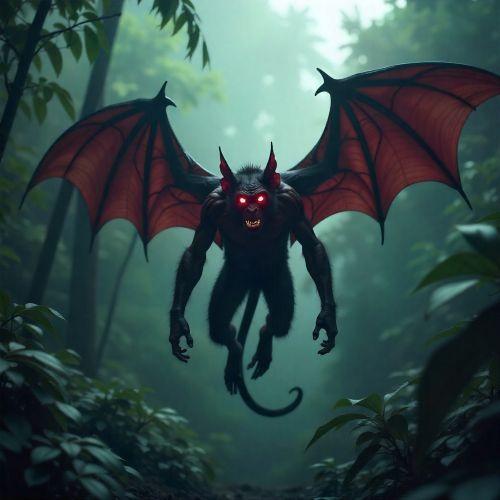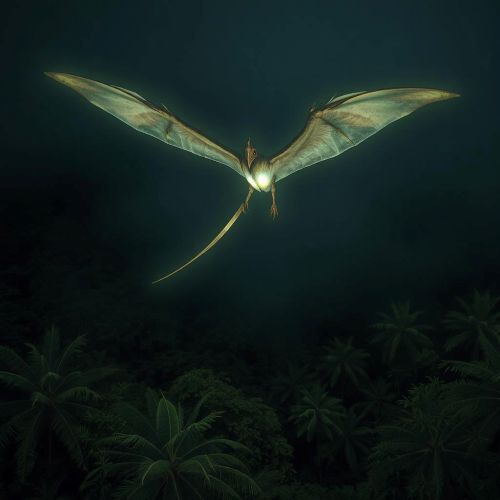Incubus : The Sexual Predator
| Description | |
|---|---|
| Origin | United States of America |
| Classification | Demon |
| Demeanour | Evil |
| Habitat | Homes |
| Status | Not Proved |

Introduction
The Incubus is a mythological entity described as a male demon that engages in sexual activity with sleeping women. Its female counterpart, the Succubus, shares similar traits but targets men. The Incubus has been a recurring figure across various cultures, often used to explain sleep paralysis, erotic nightmares, and mysterious pregnancies. Rooted in early Mesopotamian lore and firmly embedded in medieval European superstition, this nocturnal demon has persisted through the ages and adapted into contemporary narratives of horror, folklore, and psychology. Despite its supernatural origin, the Incubus also serves as a lens through which historical societies tried to understand repressed sexuality, nighttime disturbances, and unexplained phenomena.
Physical Attributes
Descriptions of the Incubus vary greatly depending on the era and culture. In some traditions, it appears grotesque—small, twisted, with animalistic features such as claws, horns, bat-like wings, and glowing eyes. These portrayals emphasize its demonic origins, presenting it as a nightmarish being meant to invoke fear and revulsion. Other depictions, especially in more recent interpretations, show the Incubus as irresistibly attractive, with perfect physical form, smooth skin, and hypnotic eyes. This duality—between horror and seduction—mirrors the entity’s role in folklore: a being that both entices and terrifies. These shifting characteristics are said to be part of its shapeshifting ability, allowing it to change age, features, or even gender based on the desires of its target.
First Sighting/Reporting
While the Incubus is commonly linked to medieval European accounts of demonic visitation, its roots can be traced back to ancient Mesopotamian mythology. The demon Lilu is often cited as the earliest example of an incubus-like creature, known to disturb women at night. Ancient texts such as the Sumerian King List even mention Gilgamesh as the offspring of a mortal woman and a demon, likely Lilu. In Europe, formal medical and religious documentation of Incubus encounters started appearing around the 17th century. One of the earliest detailed reports came from a Dutch physician in 1664 who recorded female patients describing demonic assaults during episodes of sleep paralysis. These historical accounts were usually interpreted through religious or superstitious lenses, often blaming the demonic presence for unexplained pregnancies or mental distress.
Other Names
The Incubus appears under various names around the world, each with its own cultural flavor. In Islamic and Arabian folklore, it is referred to as “Kaboos” or “Hadun,” often linked to jinn or evil spirits. In German traditions, a similar entity called the Alp invades dreams and causes chest pressure. Slavic cultures describe the Mora or Mara, a nightmare-inducing spirit. In South America, beings like the Trauco in Chile and the Tintín in Ecuador serve a similar function—explaining mysterious or unwanted pregnancies. In Southern Africa, the Tokolosh is a mischievous and often malevolent creature associated with nighttime assaults. Each of these names adds a layer of cultural interpretation, yet they all share the central concept of a supernatural force targeting individuals in their sleep.
Modus Operandi
The Incubus operates under the cover of darkness, typically striking when victims are asleep and most vulnerable. It induces sensations of paralysis, creating intense and often disturbing dreams that feel strikingly real. Victims may describe being held down, suffocated, or subjected to unwanted sexual encounters, with the overwhelming feeling of a heavy weight pressing on their chest. These episodes are sometimes accompanied by hallucinations of shadowy figures, making it difficult to distinguish between dream and reality. Traditional belief holds that repeated encounters can drain a person’s energy, lead to illness, or even result in death. In some legends, the Incubus aims to impregnate women, producing offspring known as Cambions—supernatural beings with unusual strength or psychic abilities. In other interpretations, the demon harvests semen by taking on a female form (as a succubus) and transferring it to women when it returns as an incubus. Modern scientific perspectives offer alternate explanations, citing sleep disorders such as sleep paralysis and hypnagogic hallucinations as the likely cause behind these terrifying encounters.
Pop Culture References
The Incubus has become a familiar figure in horror fiction, fantasy literature, and entertainment media. The 1966 cult film Incubus, starring William Shatner and spoken entirely in Esperanto, explored the myth through eerie visuals and a tale of demonic seduction. Television series like Supernatural, Charmed, and Buffy the Vampire Slayer have all featured Incubi in episodes involving sexual demons or dream-invading spirits. In literature, the concept of the Incubus is explored both as a dark romantic figure and as a predatory villain. Novels like Captive by Jex Lane and the Anita Blake series by Laurell K. Hamilton depict Incubi as alluring yet dangerous creatures. Video games such as The Witcher and Castlevania include demonic characters based on this myth. Even the rock band Incubus drew from the legend for its name, reflecting its themes of rebellion and mystique. These appearances reinforce the demon’s appeal in modern narratives, oscillating between seduction, horror, and psychological drama.
Current Status
Today, belief in the Incubus as a literal demon has largely faded, but the experiences associated with it persist. The “Incubus phenomenon” is now studied in medical and psychological fields, particularly in relation to sleep disorders. A meta-analysis published in Frontiers in Psychiatry revealed that over 11% of people may experience this phenomenon in their lifetime, with numbers rising significantly among individuals with psychiatric conditions, trauma survivors, and university students. Factors such as stress, sleep deprivation, and certain sleep positions are known to trigger episodes. While some interpret these occurrences as spiritual attacks or signs of paranormal activity, many experts consider them a blend of sleep paralysis and hypnagogic hallucinations. In psychiatric literature, “incubus syndrome” describes a rare delusional disorder in which patients, often women, report repeated sexual assault by an invisible force. Treatment generally involves antipsychotic medication and psychological therapy. Meanwhile, the legend continues to be discussed on social media, paranormal forums, and storytelling platforms. It has evolved from a feared demon of the night into a symbol of the unknown terrors that can emerge from the boundary between waking life and sleep.
Source
Hufford, D. J. (2005). Sleep paralysis as spiritual experience. Transcultural Psychiatry, 42(1), 11–45. https://doi.org/10.1177/1363461505050715
Radford, B. (2015). Mysterious Incubus and Succubus Demons. Live Science. https://www.livescience.com/24374-incubus-succubus.html
Krippner, S., & Friedman, H. L. (2010). Mysterious Minds: The Neurobiology of Psychics, Mediums, and Other Extraordinary People. Praeger. https://www.abc-clio.com/products/a3121c
Guiley, R. E. (2006). The Encyclopedia of Demons and Demonology. Facts On File. https://www.infobasepublishing.com/Bookdetail.aspx?ISBN=0816069804
Reddit. (n.d.). r/Paranormal. https://www.reddit.com/r/Paranormal/









